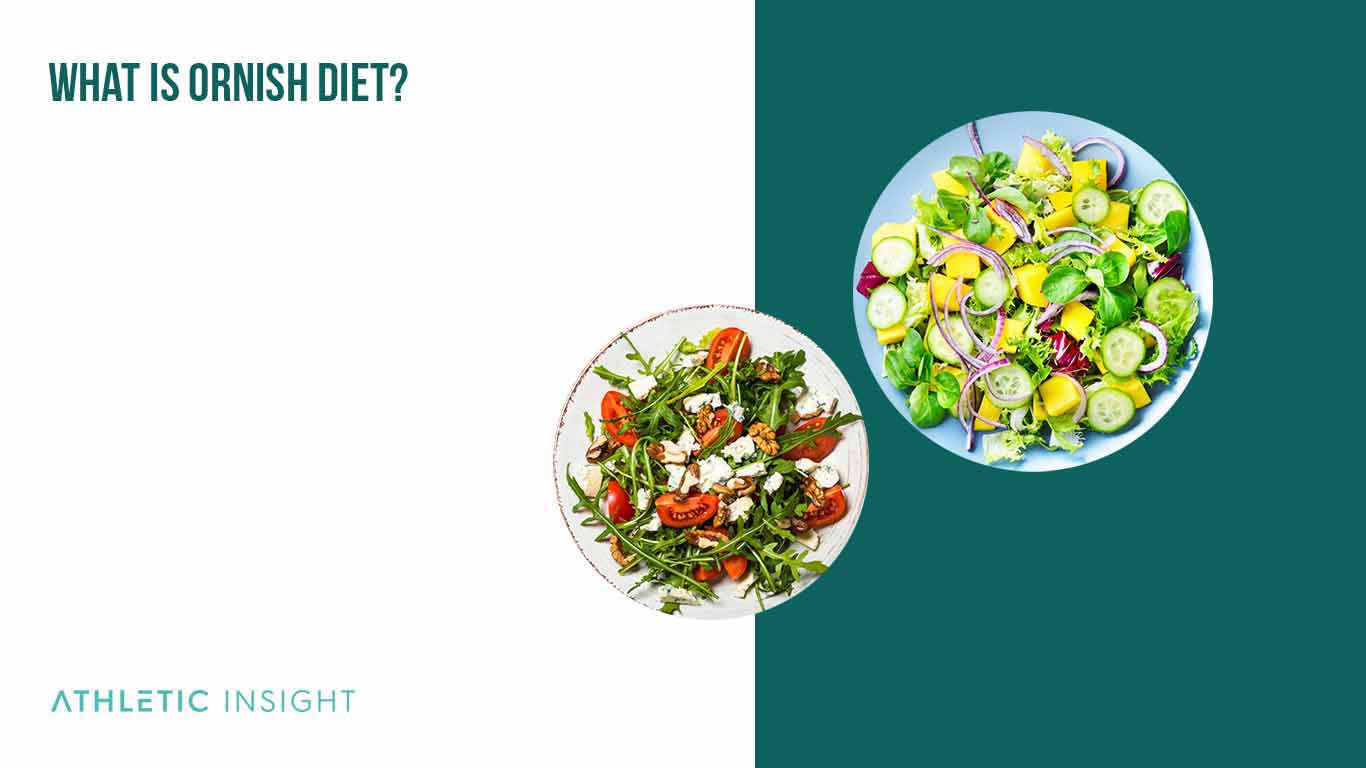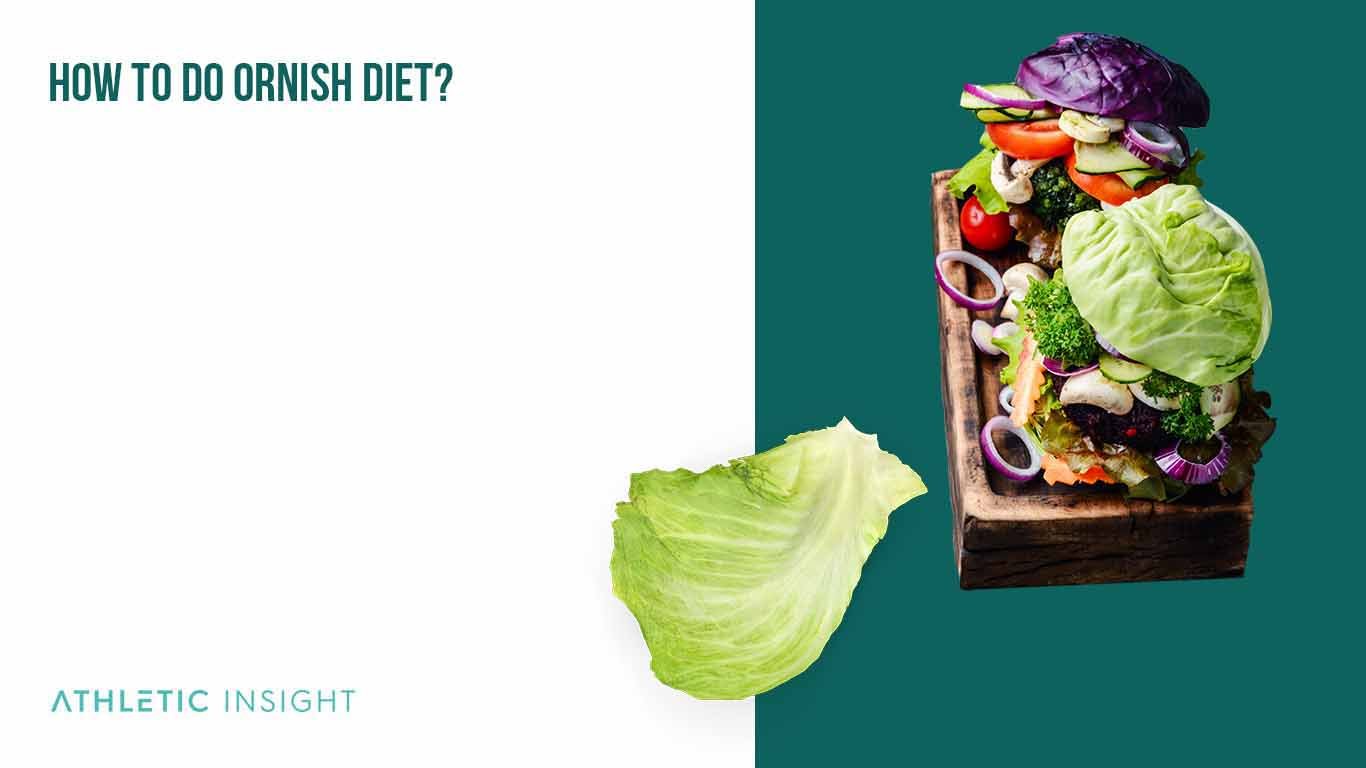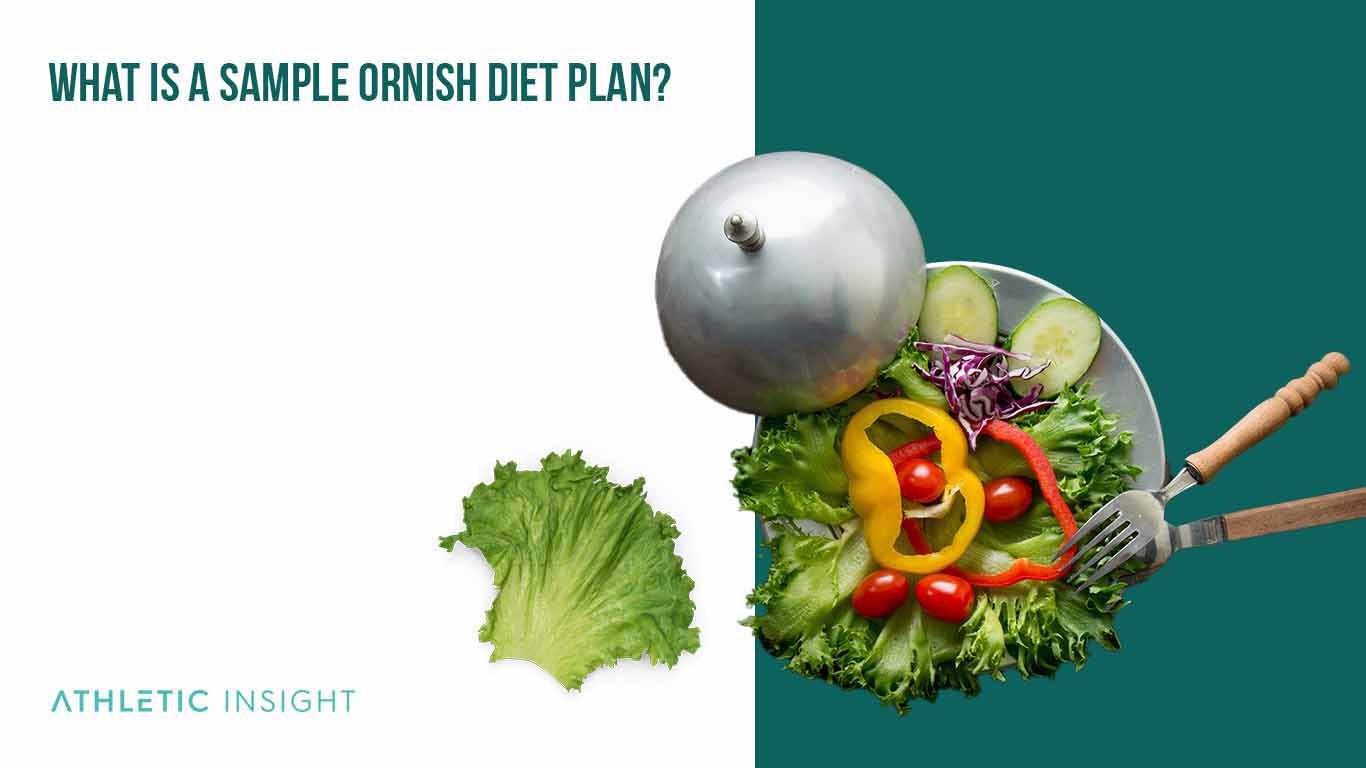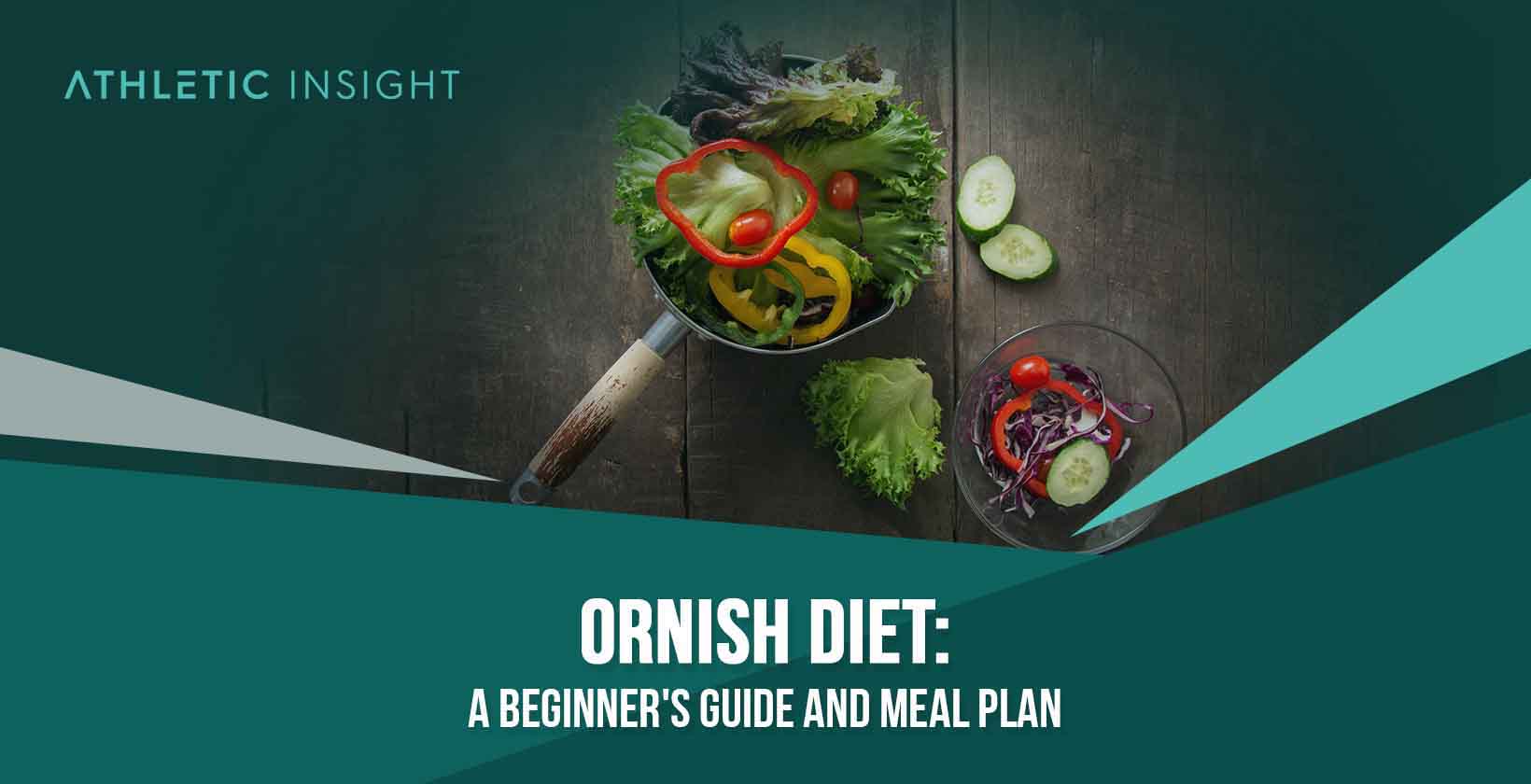The Ornish diet, also known as the Ornish lifestyle medical program, is a popular diet and exercise regimen developed by Dr. Dean Ornish. It is based on the idea that small lifestyle changes can profoundly impact your health and well-being, from reducing stress to reversing chronic diseases. This diet is a long-term lifestyle to achieve improved health and longevity.
The Ornish diet is a highly-researched and evidence-based approach to healthful eating and living. By following the Ornish diet, you can make significant changes to your lifestyle that will benefit your physical and mental health. The Ornish diet is an effective option if you’re looking for a way to improve your overall health.
What Is an Ornish Diet?
The Ornish diet is holistic and touches on different parts of one’s lifestyle. The core of the Ornish diet has five key components: whole foods, healthy lifestyle behaviors, stress management techniques, moderate exercise, and love. These principles of the diet promote overall health and well-being.

The diet mainly consists of plant-based foods such as vegetables, fruits, legumes, nuts, seeds, and whole grains. The program prioritizes other lifestyle behaviors such as regular exercise and stress reduction techniques like yoga and meditation.
The Ornish diet has three intensity levels, ranging from the most restrictive to the least: Reversal, Optimal Health, and Prevention. The Reversal level is designed for those with existing medical conditions, while the Optimal Health level is better suited for those looking to maintain good health. The Prevention level is suitable for those wanting to prevent future chronic illnesses.
At all levels of the Ornish diet, processed foods are not allowed, and there is an emphasis on whole grain products, legumes, fruits, and vegetables. The Ornish diet recommends avoiding animal products, saturated fats, added sugars, and refined grains.
You can customize the diet to fit individual needs and preferences. The diet also encourages healthy meal planning and eating various foods at each meal. Lastly, this diet plan promotes a mindful approach to eating and recommends focusing on the flavors and textures of food while also paying attention to how you feel.
How Does Ornish Diet Work?
The Ornish diet focuses on whole foods and lifestyle behaviors that promote health and well-being. Unlike many other diets, it is not calorie restrictive, nor does it have many rules besides avoiding animal products.
The Ornish diet is effective because it is more of a lifestyle change than just a diet. The core concept behind this diet is that diet, exercise, and relationships all contribute to a person’s health. Instead of just focusing on one aspect of this trifecta, the Ornish diet looks at all three components and how they can improve overall health.
The diet recommendations bolster the holistic approach of this diet. Instead of restricting your diet, the Ornish diet highlights balance. For example, you can drink caffeine, but you should only have one cup of coffee daily. The diet also balances healthy fats, protein, and carbs.
The Ornish diet is also designed to be flexible and personalized. Instead of restricting foods, you learn to eat mindfully, so you can focus on the flavors of your food and pay attention to how your body responds. The Ornish diet also encourages physical activity, with yoga and walking recommended. Finally, the Ornish diet helps to promote better relationships with loved ones, including activities such as taking walks or eating meals together.
Combining these factors helps you build a healthy lifestyle that is not only sustainable but enjoyable.
What are the Health Benefits of the Ornish Diet?
There are a wide variety of health benefits to following the Ornish Diet such as reduced risk of heart disease, weight loss, and lower inflammation.
- Reduced Risk of Heart Disease: Studies have shown that the Ornish diet effectively lowers cholesterol levels, which may help reduce your risk of heart disease.
- Weight loss: The Ornish diet is not calorie restrictive but encourages mindful eating and a balanced diet with whole foods, which can lead to weight loss over time.
- Lower Inflammation: Studies have shown that the Ornish diet can reduce inflammation in the body, which may help decrease your risk for chronic illnesses.
What are the Health Risks of the Ornish Diet?
Despite the benefits of the Ornish diet, there are some health risks associated with this diet such as poor nutrition, weight gain, and digestive problems.
- Poor nutrition: Because the Ornish diet is plant-based, getting all the necessary nutrients your body needs can be challenging, which can lead to deficiencies in essential vitamins and minerals.
- Weight gain: The Ornish diet doesn’t focus on calorie restriction, so it is possible to gain weight while on this diet.
- Digestive problems: Since this diet is plant-based, your body may struggle to adjust to all the fiber at the beginning of the diet.
It is essential to follow the Ornish diet correctly to avoid any health risks and
How to Do an Ornish Diet?
You can implement the Ornish diet by following the subsequent steps.

- Step 1: Change your diet to plant-based, cutting out all animal products and processed foods. You should also limit your non-fat dairy to two servings per day.
- Step 2: Incorporate a variety of whole grains, legumes, fruits, and vegetables into your meals and eliminate other processed carbs from your diet.
- Step 3: Eat mindfully. Pay attention to how each food makes you feel and focus on the flavor and texture of each meal.
- Step 4: Reduce or eliminate unhealthy fats and added sugars from your diet.
- Step 5: Exercise regularly and make sure to include yoga and walking.
- Step 6: Foster meaningful relationships with family and friends.
While following the Ornish diet, you don’t have to worry about calorie restriction. This diet does not limit the number of calories you eat daily, so you should follow the FDA guidelines and eat between 1800-2500 calories per day, depending on your sex and body type.
The Ornish diet is a lifestyle adjustment. You can safely follow this diet for an indefinite amount of time. However, if you are not ready to commit, you can follow it for as little as a month to see results.
Suppose you want to maximize your benefits from following this diet. There are some best practices you should follow. These include cooking at home, eating wholesome ingredients, and avoiding processed foods. Also, stay active, drink plenty of water, and get enough sleep.
The Ornish diet is a great way to improve your health and lifestyle; if you follow it correctly, you should see results.
What are the Foods that You Can Eat While on an Ornish Diet?
The Ornish Diet Food List includes a wide variety of foods.
- Fruits: apples, bananas, oranges, kiwis, berries, melons
- Vegetables: broccoli, kale, cabbage, peppers, onions, garlic, zucchini
- Grains: quinoa, buckwheat, barley, brown rice
- Legumes: kidney beans, chickpeas, black beans
- Nuts: almonds, walnuts, cashews, pecans
- Seeds: pumpkin seeds, flax seeds
- Healthy fats: olive oil, coconut oil
- Proteins: tempeh, tofu, egg whites
Sticking to a plant-based diet is one tenant of the Ornish diet. You should pay careful attention to your protein because it can be more challenging to get enough while on a plant-based diet.
What are the Foods that You Should Avoid While on an Ornish Diet?
The Ornish diet is not as restrictive as other diets, and meat products are only two things you need to avoid entirely.
- Meat: beef, pork, veal
- Poultry: chicken, turkey, goose
- Fish and shellfish: salmon, anchovies, shrimp
- Meat-based ingredients: deli meats, sausage
- Eggs: egg yolks
- Dairy products: full-fat dairy products
You should avoid these foods as they are high in saturated fat. Additionally, avoid processed foods like pre-packaged snacks and fast food. These foods are high in unhealthy fats, added sugars, and preservatives that can lead to numerous health issues.
Who Should Do an Ornish Diet?
The Ornish diet is excellent for people looking to improve their overall health, lose weight, and prevent or manage chronic conditions. This diet can help reduce the risk of heart disease and stroke.
The Ornish diet is also an excellent choice for people who want to get back to basics and focus on whole foods. This diet eliminates processed and fast food, helping people rediscover fresh ingredients’ flavors and textures.
Another appealing aspect of the Ornish diet is that it is a holistic solution for your dietary needs, which means it’s more intense and far-reaching than some other diets.
Finally, the Ornish bodybuilding diet is a popular option for many in the fitness world. The emphasis on clean eating and holistic health is an excellent fit for many bodybuilders and athletes. Avoiding processed foods and saturated fats helps people lead down before body-building competition and build lean muscle.
How Easy Is an Ornish Program to Follow?
The Ornish program is challenging because you must adjust your lifestyle and diet to follow it completely. The diet is relatively easy to follow since it is not overly restrictive. However, some will find eating a plant-based diet to be complicated.
Transitioning to a plant-based diet can take some time, as you must learn what ingredients and recipes work for you. Additionally, following the diet can be expensive because of the emphasis on fresh and unprocessed ingredients.
What Is a Sample Ornish Diet Plan?
This Ornish Diet Plan is an example of what you would eat in a week on this diet.

Day 1
- Breakfast: egg white and fresh vegetable frittata with potatoes and fresh fruit on the side
- Lunch: low-fat Greek yogurt with fruit, a side salad with bread
- Dinner: Asian salad with spinach and mushroom lasagna and roasted vegetables
Day 2
- Breakfast: cinnamon and apple muffin with yogurt and blueberries
- Lunch: black bean burger with coleslaw and sweet potato fries
- Dinner: creamy pesto dip with sliced vegetables, mushroom stroganoff
Day 3
- Breakfast: tofu breakfast scramble with sliced fruit
- Lunch: veggie and black bean tacos with fresh salsa
- Dinner: Thai green curry with vegetables, brown rice, and sliced fruit
Day 4
- Breakfast: Overnight oatmeal with fresh fruit and honey
- Lunch: Egg sandwich, hummus, and vegetables
- Dinner: southwest salad with black beans, enchilada sauce, and onions
Day 5
- Breakfast: Breakfast burrito with cheese and vegetables
- Lunch: Power green smoothie and a side salad
- Dinner: Tofu stir-fry with mixed vegetables, brown rice, and pineapple
Day 6
- Breakfast: Cinnamon French toast and fruit
- Lunch: BBQ salad with black beans, sweet potatoes, and tofu
- Dinner: Cajun tofu with spicy beans and rice
Day 7
- Breakfast: Egg white scramble with black bean patty and salsa
- Lunch: Chili-baked potato and a Greek yogurt parfait
- Dinner: tomato sauce and whole-wheat spaghetti
What are the Best Recipes for an Ornish Diet?
These recipes for Ornish Diet come together quickly while ensuring proper nutrition.
- Red rice, lentils, and Spinach Pilaf: This slow-cooked pilaf dish is a great meal and makes excellent leftovers.
- Spinach and Spaghetti Squash Fritters: These breakfast fritters are ways to make and are perfect for on-the-go meals.
- Vegetable Quinoa Soup: The quinoa in this soup makes this healthy soup filling and satisfying.
- Pesto Dip and Vegetables: Pesto dip is a great snack, but you can double the portion and make it a meal.
- Green Smoothie: Green smoothies have the vitamins and nutrients to get you going in the morning.
What are the Facts About the Ornish Diet?
You should know some critical facts about the Ornish diet, including what happens during the first week of the diet, the weight loss potential, the length of the diet, meditation, and benefits.
- The First Week: During the first week of the Ornish diet, you will transition to a plant-based diet. It would help if you focused on cutting out processed foods and increasing your consumption of fruits and vegetables.
- Weight Loss: The Ornish diet is designed to help you lose weight if that’s your goal. It is important to note that the Ornish diet is a lifestyle change, and it may take time to see the desired results.
- Length of the Diet: This diet is not a crash diet, and you can sustain it indefinitely.
- Meditation: A significant part of this diet includes meditation, which helps you become more mindful of your body and food.
- Benefits: Ornish diet is beneficial because it emphasizes healthy eating habits and a holistic approach to health.
How Much Does an Ornish Program Cost?
The Ornish Program costs nothing to start. You can find all the information for the dietary requirements online. However, if you would like additional guidelines on the other aspects of the diet, there are many books, programs, and seminars you can take part in to learn more. Additionally, there are many online resources where you can find recipes. The books cost around $20, and many of the seminars are free.
What are the Alternatives to an Ornish Diet?
There are several alternatives to the Ornish diet in terms of diet and lifestyle. Here are some other diets that may be a good option for you.
- The Mediterranean Diet: The Mediterranean diet is a balanced approach to eating that emphasizes fruits and vegetables, nuts and legumes, whole grains, and lean proteins.
- The DASH Diet: The Dietary Approaches to Stop Hypertension (DASH) diet is low in sodium and focuses on reducing the risk of high blood pressure.
What Does an Ornish Diet PDF Involve?
An Ornish Diet PDF contains the diet, guidelines, and recipes. It also has information about how much of each food group you should eat, tips for eating out, and meal planning. Other topics include physical activity, stress management, and lifestyle modifications to support the diet.
How to Find a 3D Ornish Diet Printable Plan?
You can find a 3D Ornish Diet Printable Plan by doing a google search. Be sure to look for a plan tailored to your individual needs and lifestyle. There are many websites with free pdf printable plans available.
What Is the Difference Between the Ornish Diet and Omad Diet?
The Ornish diet is a plant-based diet that emphasizes fruits, vegetables, whole grains, legumes, and other plant proteins. The Omad Diet is a keto-style diet focusing on consuming high amounts of fats and proteins while limiting carbohydrates. Both diets can help with weight loss but have different approaches and emphasize other foods.



